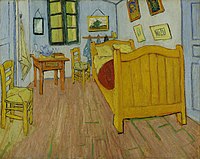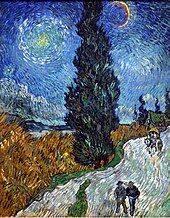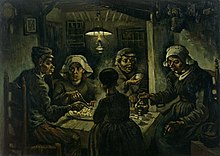Updated on April 5, 2020
The magical world of Van Gogh’s art
 The Starry Night, June 1889. Museum of Modern Art, New York.
The Starry Night, June 1889. Museum of Modern Art, New York.
 Bedroom in Arles, 1888. Van Gogh Museum, Amsterdam.
Bedroom in Arles, 1888. Van Gogh Museum, Amsterdam.
 The Church at Auvers, 1890. Musée d'Orsay, Paris.
The Church at Auvers, 1890. Musée d'Orsay, Paris.
 Road with Cypress and Star, May 1890, Kröller-Müller Museum, Otterlo.
Road with Cypress and Star, May 1890, Kröller-Müller Museum, Otterlo.
 Memory of the Garden at Etten, 1888. Hermitage Museum, St Petersburg.
Memory of the Garden at Etten, 1888. Hermitage Museum, St Petersburg.
 White House at Night, 1890. Hermitage Museum, St Petersburg, painted six weeks before the artist's death.
White House at Night, 1890. Hermitage Museum, St Petersburg, painted six weeks before the artist's death.
 Fishing Boats on the Beach at Saintes-Maries, June 1888. Van Gogh Museum, Amsterdam.
Fishing Boats on the Beach at Saintes-Maries, June 1888. Van Gogh Museum, Amsterdam.
 The Potato Eaters, 1885. Van Gogh Museum, Amsterdam.
The Potato Eaters, 1885. Van Gogh Museum, Amsterdam.
Art can be a great source of pleasure in our lives. Even a passing acquaintance with art can enrich and deepen our understanding of the world around us. There’s no need to become an expert to have a meaningful relationship with art. All it takes is a moderate attention to detail, a little bit of patience, and a willingness to reflect on your own feelings.
There are no hard and fast rules about what makes a piece great, mediocre, or bad; remember, Van Gogh’s work was once considered amateurish and forgettable. Art should appeal to you first through your senses. That doesn’t mean a painting has to be beautiful to be good, but it must grab your eye in some way. A work might grab your attention through its subject matter, it’s use of color, an interesting juxtaposition of objects, it’s realistic appearance, a visual joke, or any number of other factors.

